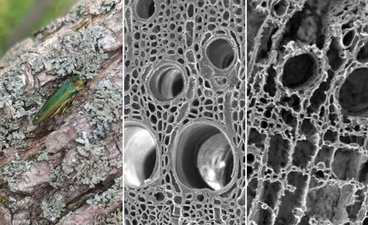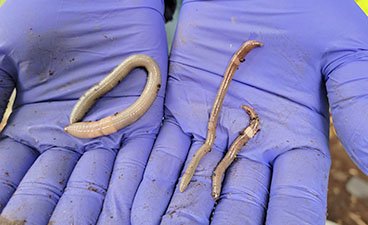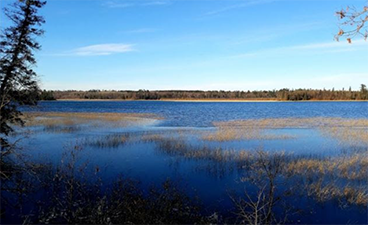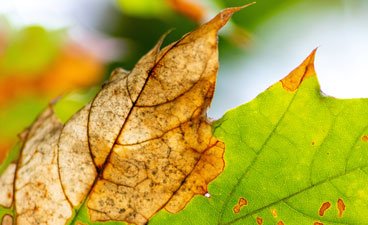
Natural Resource Management
Minnesota is home to one of the most biodiverse land systems in the U.S. Minnesota's forests provide timber, wildlife habitat, recreation, wilderness, and biodiversity to the state. The University of Minnesota focuses on improving environmental conservation across the state.
Research and Extension are committed to:
- Providing information to improve forest management and prairie restoration
- Controlling invasive species and protecting wildlife habitats on both public and private land
- Exploring ecology and how the whole system is affected by changes in climate and land management
- Increasing environmental stewardship and harnessing the power of citizen scientists to collect data and spread information
Research Highlights

The Minnesota Agricultural Experiment Station (MAES) at the University of Minnesota has awarded approximately $2.31 million from the Rapid Agricultural response Fund (RARF) to 10 research projects that will help protect Minnesota’s agricultural sector from current and emerging threats.

Researchers from the University of Minnesota and the Grand Portage Band of Lake Superior Chippewa discovered fish from 18 out of 19 testing sites in northern Minnesota contained contaminants of emerging concern (CECs) such as pharmaceuticals, hormones and personal care products. This research illustrates the ubiquity of pharmaceuticals in the environment and their potential impacts on fish — both in expected environments like wastewater but also in more surprising places, like undeveloped lakes.

Since emerald ash borer (EAB) was first detected in North America in 2002, the invasive beetle has killed hundreds of millions of mature ash trees. After an attack, branches and trunks weaken and the trees become more likely to fall. Though this degradation has historically been attributed to damage from the beetles, new research from the University of Minnesota confirms that fungi play a significant role in the process.

An interdisciplinary team of University of Minnesota researchers is studying how jumping worms spread and impact our state’s ecosystems as well as developing techniques to manage jumping worms and minimize negative impacts. Citizen scientists are essential to tracking and preventing the spread of jumping worms across the state. Learn more about jumping worms research and how citizens can contribute.

Oxygen levels in the world’s temperate freshwater lakes are declining at rates faster than in the oceans, according to research from the University of Minnesota and Rensselaer Polytechnic Institute. It’s a trend researchers found is largely driven by climate change and land use, threatening freshwater biodiversity and the quality of drinking water. Read more about this research discovery.

With funding from the MAES Rapid Agricultural Response Fund, University of Minnesota researchers at the Minnesota Center for Prion Research (MNPRO) have developed a novel approach to field testing chronic wasting disease (CWD). The team confirmed their findings in southeast Minnesota the week of March 8, 2021, making them the first-ever scientists to successfully deploy a CWD field test. Read more about this research discovery.

One of the key challenges of detecting oak wilt is how similar the symptomatic bronze or brown wilting leaves can look to signs of drought stress and other diseases. Finding infected trees in a large plot of forest land can be like searching for a needle in a haystack, especially when wilting is in its more subtle early stages. Using handheld devices, drones and airborne hyperspectral sensors, UMN researchers have been capturing the photons — packets of energy — reflecting off forest canopies.

Over the last two years, researchers at the UMN have been working with several Minnesota agencies to facilitate surveillance and enhance our understanding of the risk for CWD spreading — a key concern for Minnesota legislators. In Minnesota, these partners include the Minnesota Department of Natural Resources (DNR), Minnesota Board of Animal Health (BAH), Minnesota Department of Agriculture, Minnesota Pollution Control Agency, several tribal natural resources agencies around the state and Extension specialists.

Pandas are one of most beloved and most endangered animals on the planet but their future is far from certain. UMN researchers, using genetic analysis methods often used for livestock, analyzed wild and captive panda populations in China.